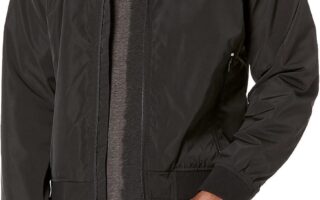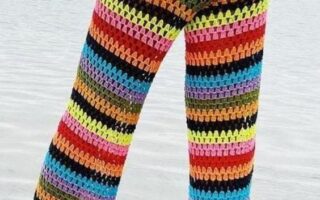In an era where convenience reigns supreme, the online dress store has emerged as a vibrant sanctuary for fashion enthusiasts and casual shoppers alike. Gone are the days of sifting through crowded malls or navigating through limited local boutiques; today’s digital landscape offers a kaleidoscope of styles, sizes, and price points, all just a click away. From elegant evening gowns to casual day dresses, these virtual marketplaces cater to a diverse array of tastes and occasions, transforming how we approach dressing for life’s many moments. As we delve into the world of online dress stores, we will explore their evolution, unique offerings, and the ways in which they have reshaped our shopping habits and personal style narratives.
Table of Contents
- Exploring the Diverse World of Online Dress Retailers
- Navigating Fit and Sizing Challenges in Virtual Shopping
- Elevating Your Style: Tips for Curating a Stunning Wardrobe Online
- Sustainable Fashion: Choosing Eco-Friendly Dress Vendors
- Q&A
- To Wrap It Up
Exploring the Diverse World of Online Dress Retailers
The world of online dress retailers is vast and varied, catering to an array of tastes, budgets, and occasions. Consumers can find everything from everyday wear to high-fashion pieces, reflecting the latest trends with just a few clicks. Some of the popular categories that these retailers cover include:
- Casual Dresses: Perfect for everyday outings.
- Evening and Cocktail Dresses: For formal events and parties.
- Bridal and Wedding Dresses: Specially designed for the big day.
- Seasonal Collections: Dresses that embrace the styles of spring, summer, fall, and winter.
As you navigate through this digital landscape, it’s crucial to consider factors such as size inclusive options, sustainable practices, and even customer reviews to make informed choices. Below is a simple comparison table showcasing some renowned online dress retailers, highlighting their unique offerings:
| Retailer | Specialty | Price Range |
|---|---|---|
| ASOS | Trendy Casual Wear | $20 - $300 |
| Nordstrom | Designer Evening Dresses | $50 – $500 |
| ModCloth | Vintage-Inspired | $30 – $200 |
| Reformation | Sustainable Fashion | $100 – $400 |
Navigating Fit and Sizing Challenges in Virtual Shopping
Shopping for dresses online can be a delightful experience, yet it often comes with its share of challenges, particularly when it comes to fit and sizing. Unlike in physical stores, where you can try on a dress and see how it fits in real-time, virtual shopping relies heavily on size charts and customer reviews. Many brands offer detailed guidelines, but discrepancies can arise between different retailers, as sizing standards are not universal. To effectively navigate these challenges, it’s crucial to measure yourself accurately and consult the specific sizing chart provided by each store. Consider the following tips:
- Know Your Measurements: Use a measuring tape to find your bust, waist, and hip measurements.
- Read Customer Reviews: Often, previous buyers will provide insights about fit and whether an item runs small or large.
- Look for Virtual Fitting Tools: Some online dress stores offer technology that allows you to visualize the fit on a digital model.
In addition to these, understanding the fabric type can also significantly influence your fit experience. Flowing materials may drape differently compared to structured fabrics, altering how a dress fits on your body type. To illustrate this concept further, consider the table below displaying common dress fabric types and their typical fits:
| Fabric Type | Typical Fit |
|---|---|
| Woven Cotton | More structured, holds shape well |
| Jersey Knit | Stretchy, hugs the body |
| Satin | Smooth drape, can be fitted or loose |
| Linen | Breezy, often loose fit with some wrinkles |
Elevating Your Style: Tips for Curating a Stunning Wardrobe Online
Curating a visually appealing wardrobe online begins with identifying your unique style. Start by exploring various online dress stores that cater to different tastes, from bohemian chic to contemporary elegance. Create a mood board using platforms like Pinterest or tools like Canva, where you can gather inspiration from outfits that resonate with you. Key elements to consider when shopping include:
- Color Palette: Choose colors that complement your skin tone and make mixing and matching easier.
- Fabric Quality: Invest in pieces made from durable materials to ensure longevity.
- Silhouette: Understand what cuts flatter your body shape for an effortlessly chic look.
Next, streamline your shopping journey by utilizing filtering options available on online platforms. This way, you can easily narrow down potential outfits based on size, color, or style. Implement selective shopping by creating a wish list of items before purchase, giving yourself time to evaluate whether each piece truly adds value to your wardrobe. To help keep track of your favorites, consider a quick reference table:
| Style | Key Characteristics | Best For |
|---|---|---|
| Bohemian | Flowy fabrics, earthy tones | Casual outings, festivals |
| Classic | Timeless cuts, neutral colors | Work, formal events |
| Contemporary | Trendy styles, bold prints | Evenings out, brunch |
Sustainable Fashion: Choosing Eco-Friendly Dress Vendors
In the modern era, the ethos of purchasing clothing has evolved, and more consumers are prioritizing environmental sustainability in their fashion choices. When selecting your dress vendors, consider those that adhere to eco-friendly practices. These vendors often utilize sustainable materials such as organic cotton, recycled fabrics, and bamboo. Moreover, they implement ethical production processes that focus on minimizing waste and reducing their carbon footprint. By choosing brands committed to sustainability, you can ensure that your fashion choices contribute positively to the environment.
Here are some factors to look for when identifying eco-conscious dress vendors:
- Transparency: Look for brands that openly share information about their supply chains and production methods.
- Certification: Seek out vendors with certifications like GOTS (Global Organic Textile Standard) or Fair Trade.
- Local Sourcing: Brands that source materials locally often have a reduced environmental impact due to lower transportation emissions.
- Recycling Programs: Some companies offer programs to recycle returned clothing, helping to keep textiles out of landfills.
To illustrate the difference between conventional and eco-friendly vendors, consider the following comparison:
| Feature | Conventional Vendors | Eco-Friendly Vendors |
|---|---|---|
| Material Sourcing | Non-organic, synthetic materials | Organic or recycled materials |
| Production Practices | Mass-production, often overseas | Ethical and often local production |
| Environmental Impact | High carbon footprint | Minimal carbon footprint |
Q&A
Q&A: Exploring the World of Online Dress Stores
Q: What are online dress stores?
A: Online dress stores are virtual retail platforms that specialize in selling dresses for various occasions, styles, and sizes. They allow consumers to browse collections from the comfort of their homes, offering a wide range of options, from casual wear to formal gowns.
Q: What are the benefits of shopping for dresses online?
A: Shopping online offers several advantages, including a vast selection, the ability to compare prices easily, and the convenience of shopping at any time without the constraints of store hours. Additionally, many online stores provide customer reviews, which can help guide decisions and assure quality.
Q: Are there any drawbacks to online dress shopping?
A: Yes, there are some potential downsides. For instance, customers cannot try on dresses before purchasing, which can lead to fitting issues. Additionally, shipping times and return policies vary by store, sometimes leading to delays or added costs if a return is necessary.
Q: How do I choose the right size when shopping for dresses online?
A: To select the correct size, it’s essential to refer to the size charts provided by the store, as sizes can differ between brands. Measuring yourself and comparing your measurements to the chart can help ensure a better fit. Look for stores with easy return policies, so you have the option to exchange items if needed.
Q: What payment options are typically available at online dress stores?
A: Most online dress stores accept a variety of payment methods, including credit/debit cards, PayPal, and digital wallets. Some may also offer payment plans for larger purchases, allowing customers to pay over time.
Q: How can I ensure the quality of a dress before buying it online?
A: To assess quality, consider checking customer reviews and product ratings. Look for detailed descriptions and high-quality images that show the fabric and construction. If available, look for information about the return policy and satisfaction guarantees to help you make a more informed choice.
Q: Are there any sustainable or eco-friendly online dress stores?
A: Yes, many online dress retailers are committed to sustainability, offering eco-friendly materials, ethical manufacturing processes, or second-hand garments. Researching the store’s values and practices can help you find brands aligned with your environmental priorities.
Q: What should I be aware of regarding shipping and returns?
A: Each online store has its own shipping and return policies. Be mindful of shipping costs, estimated delivery times, and the return window. Some stores offer free returns and exchanges, while others may charge fees or have stricter return policies.
Q: Can online dress stores cater to all body types?
A: Many online dress stores strive to be inclusive, offering a variety of sizes and styles to accommodate different body types. Some brands specialize in plus-size fashion, while others may focus on petite or tall options, so it’s beneficial to explore multiple sites to find ones that meet individual needs.
Q: How can I find the latest trends and styles when shopping online?
A: Stay updated on fashion trends by following style blogs, social media influencers, and fashion magazines. Many online dress stores also have newsletters, social media channels, or lookbooks showcasing the latest arrivals and style inspirations.
Q: What is the future of online dress shopping?
A: The future holds exciting possibilities for online dress shopping, including advancements in virtual fitting rooms, augmented reality to visualize clothing on oneself, and enhanced personalization through AI-driven recommendations. As technology evolves, so too will the online shopping experience, making it easier and more enjoyable for customers.
To Wrap It Up
As we navigate the ever-evolving landscape of fashion, online dress stores have emerged as a beacon of convenience and creativity. They offer a curated window into a world of styles, cuts, and colors, transcending geographical barriers and putting the latest trends at our fingertips.
Whether you’re searching for the perfect gown for a special occasion or a casual dress to embrace everyday chic, these virtual boutiques cater to every taste and need, inviting you to explore. As we click through pages filled with vibrant fabrics and unique designs, let us embrace the possibilities that online shopping brings, all while remembering the importance of supporting ethical practices and sustainable choices.
In a realm where each pixel could ignite a spark of inspiration, consider your next online dress purchase not just as a transaction, but as a step into a broader narrative of fashion that connects us all. So go ahead, keep exploring, experimenting, and expressing yourself through the versatile world of online dress shops. The perfect dress is just a click away!



